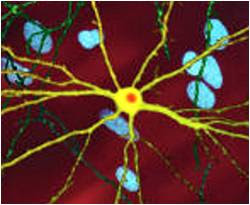Pain in a Vat

Previously on this blog I've discussed the case of cultures of living rat neurons, removed from their natural environment (the inside of the skull of a rat), and grown on top of an electrical interface that allows the neurons to communicate with robotic systems - effectively, we remove part of the rat's brain, and then give this reprocessed bit of brain a new, robotic body. One of the stranger issues that pops up with this system is that it is extraordinarily easy to 'switch' between bodies in this situation. [1] For instance, I could easily write a computer program that creates a brief, pleasant sound reminiscent of raindrops every time the culture increases it's electrical activity. Alternatively, the same burst of activity could be used to trigger an emotionless, electronic voice to say “Please help me. I am in pain.” While nociception (the low-level transmission of pain information) and unconscious reactions to pain both occur in the spine and peripheral nerv...

